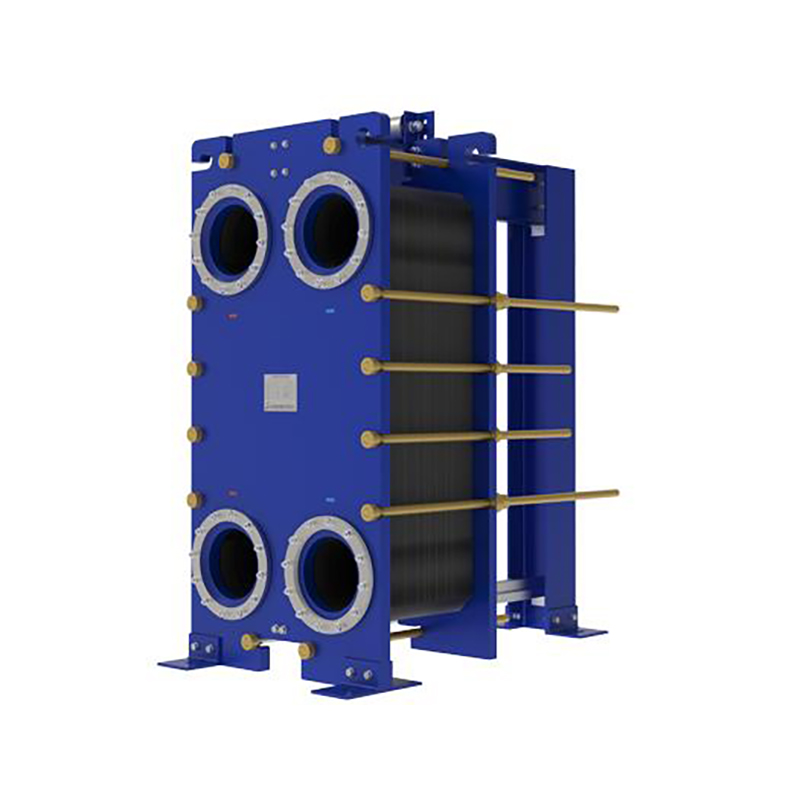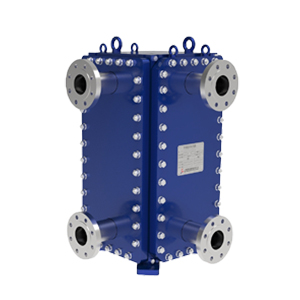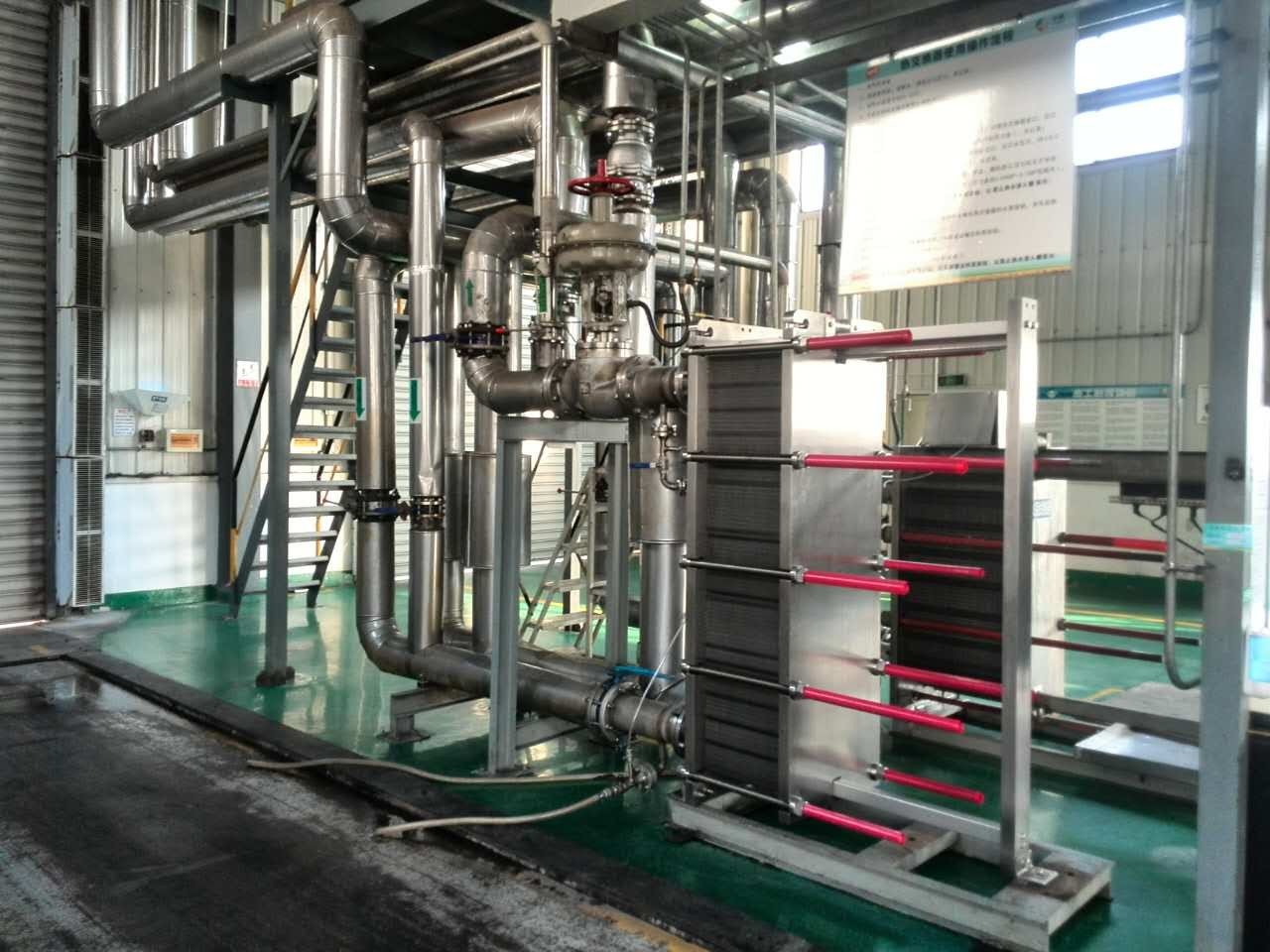5 key roles of plate heat exchanger gaskets.
Plate heat exchanger gaskets perform 5 key roles: ...
More
Counterflow heat exchangers are advanced thermal management devices designed to transfer heat between two fluid streams flowing in opposite directions. This configuration achieves superior temperature regulation and energy recovery compared to parallel-flow systems, making them indispensable in industries where precision temperature control and operational efficiency are critical. By facilitating a more uniform temperature difference across the entire transfer surface, these systems significantly enhance the rate of heat recovery, reduce thermal stress on components, and lower the required surface area for effective operation. They are engineered to handle a diverse range of temperatures and pressures, serving as a cornerstone technology in sectors like HVAC, power generation, chemical processing, and manufacturing, where optimizing energy use directly impacts cost and environmental footprint.
A counterflow heat exchanger operates on the principle of two fluids moving in opposite directions, which creates a more consistent and steeper temperature gradient across the heat transfer surface compared to parallel-flow designs. This opposite flow direction allows the system to achieve a much higher log mean temperature difference (LMTD), a key metric for heat exchanger efficiency. For instance, in a typical application such as a shell-and-tube heat exchanger configured for counterflow, the hot fluid enters at one end at a high temperature (e.g., 150°C) and exits at the opposite end cooled (e.g., 50°C), while the cold fluid enters at the opposite end at a low temperature (e.g., 20°C) and exits at the end where the hot fluid entered, now heated (e.g., 120°C). This setup can achieve thermal effectiveness—defined as the ratio of actual heat transfer to maximum possible heat transfer—often exceeding 90% in well-designed systems, whereas parallel-flow might struggle to surpass 50% for the same number of transfer units (NTU). Data from industry applications, such as in economizers for boilers or intercoolers in gas compression, show that counterflow arrangements can recover 15-30% more heat from exhaust streams. This directly translates to lower fuel requirements and reduced operating costs. In large HVAC systems for commercial buildings, implementing counterflow plate heat exchangers for energy recovery ventilation (ERV) can lead to a reduction in heating and cooling energy consumption by 20-40%, according to ASHRAE studies. The design is prevalent in chemical plants where precise temperature control of process streams is necessary, and it is the standard for applications like lubricating oil cooling in large engines and transformers. The materials used, such as stainless steel, titanium, or specialized alloys, are selected based on the fluids' corrosiveness and operating pressure, which can range from vacuum conditions to over 100 bar. The high efficiency inherently means that for the same heat duty, a counterflow heat exchanger can be more compact, saving on space and material costs, which is a significant advantage in capital-intensive projects.
The operational mechanism of a counterflow heat exchanger is defined by the continuous heat transfer between two fluids moving in opposite directions through adjacent channels. This counter-current flow maintains a driving temperature difference (ΔT) that is relatively constant and large across the entire length of the exchanger. As the hot fluid flows in one direction, it gradually transfers its thermal energy to the colder fluid moving towards it. This process begins at the fluid inlets, where the temperature difference is at its maximum, and continues steadily along the flow path. Crucially, unlike in parallel-flow, the coldest point of the cooling fluid is always in contact with the coldest point of the heated fluid, and the hottest point of the heating fluid is in contact with the hottest point of the cooled fluid. This allows the exiting temperature of the cold fluid to potentially approach the entering temperature of the hot fluid, and the exiting temperature of the hot fluid to approach the entering temperature of the cold fluid, a feat impossible in parallel-flow designs. This is why counterflow is the preferred configuration for achieving the highest possible heat recovery and temperature cross.
In a detailed functional breakdown, the process starts as the hot fluid enters the exchanger at its highest temperature (T_h,in). Simultaneously, the cold fluid enters at the opposite end at its lowest temperature (T_c,in). As they pass each other, heat is conducted through the separating wall (often a tube wall or plate). The temperature of the hot fluid decreases along its path, while the temperature of the cold fluid increases along its own path in the opposite direction. The rate of heat transfer (Q) is governed by the equation Q = U * A * ΔT_lm, where U is the overall heat transfer coefficient, A is the heat transfer area, and ΔT_lm is the log mean temperature difference. The ΔT_lm for counterflow is always greater than that for parallel-flow for the same inlet and outlet temperatures, mathematically proving its efficiency superiority. For example, if a hot fluid cools from 300°F to 150°F and a cold fluid is heated from 80°F to 250°F, the ΔT_lm for counterflow is calculated to be significantly higher, leading to a smaller required surface area 'A' for the same heat duty 'Q'. This principle is physically manifested in designs like double-pipe heat exchangers, where one pipe carries the hot fluid inside and the annulus carries the cold fluid in the reverse direction. In more complex multi-pass shell-and-tube exchangers, careful baffling is used to approximate counterflow behavior on a larger scale. The working efficiency is so pronounced that it enables applications like reheating in distillation columns, where a bottom product needs to be cooled while simultaneously preheating the feed stream to the column, achieving substantial energy integration. The minimal temperature pinch throughout the device ensures that energy is not wasted and the system operates much closer to thermodynamic reversibility, maximizing exergy efficiency and minimizing entropy generation.
Select the most popular foreign trade service products to meet your diverse needs
Learn more about the dynamics and professional knowledge of the foreign trade industry

Plate heat exchanger gaskets perform 5 key roles: ...
More
A gasket in heat exchanger seals surfaces, blocks ...
MoreAPI 662 defines standards for plate heat exchanger...
More
You can see clear differences between welded block...
More
Plate heat exchangers deliver high thermal efficie...
More
Ignoring a fouled heat exchanger causes high energ...
MoreSelect the most popular foreign trade service products to meet your diverse needs
Explore more content related to foreign trade services

User Comments
Service Experience Sharing from Real Customers
Michael Chen
Process EngineerThis counterflow heat exchanger has been a game-changer for our chemical processing line. The efficiency in heat recovery is outstanding, leading to significant energy savings. The build quality is robust and it has required zero maintenance in over a year of continuous operation. An exceptional product.
Sarah Johnson
HVAC Design ManagerWe specified this unit for a large commercial building project, and it has performed flawlessly. The counterflow design provides superior temperature control and energy efficiency compared to other types we've used. The compact size was also a major benefit for our tight mechanical room space. Highly recommended for any HVAC application.
David Rodriguez
Plant Maintenance SupervisorExtremely durable and reliable heat exchanger. It handles the high temperatures and pressures in our power generation plant without any issues. The only reason it's not a full 5 stars is that the initial installation was a bit complex, but once it was up and running, it has been absolutely perfect and low-maintenance.
Emily Watkins
Lead R&D TechnicianPrecision and consistency are critical in our pharmaceutical research lab. This counterflow heat exchanger provides exact thermal management for our reactor systems. The temperature stability it offers is impeccable, which is vital for our sensitive processes. A top-tier piece of equipment for any high-precision industry.